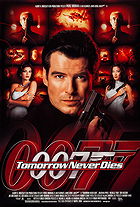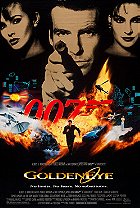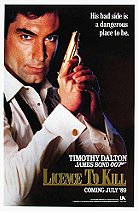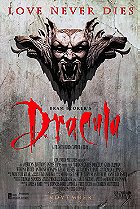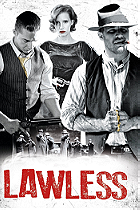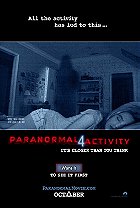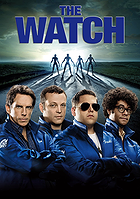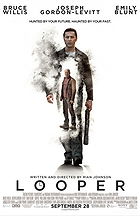A follow-up to the superlative Tomorrow Never Dies, 1999's The World Is Not Enough is the nineteenth entry in the official James Bond franchise, and Pierce Brosnan's third outing as the venerable spy. Though the film has ultimately received a bum rap from moviegoers and critics alike, it's actually a solid Bond-buster which delivers all the elements we've come to expect from this franchise. Its script (by Neal Purvis, Robert Wade and GoldenEye scribe Bruce Feirstein) admittedly contains nothing especially shocking or remarkable since it's a fairly by-the-numbers Bond film, but it does its duty in a competent enough fashion. The World Is Not Enough comes packaged with larger-than-life action sequences, amusing one-liners, a few nice explosions, a selection of gadgets, and the usual assortment of beautiful girls. For action junkies seeking a fix, there's not much to complain about, and it's hard to imagine 007 fans being entirely unsatisfied with this entertaining film.
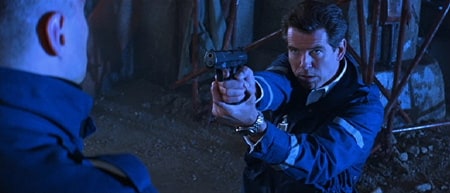
After successful oil magnate Sir Robert King (David Calder) is assassinated by terrorists, James Bond is assigned to protect Robert's daughter, Elektra (Sophie Marceau). MI6 believe that Elektra will be targeted by an anarchist named Renard (Robert Carlyle), who survived a bullet to the head which now renders him impervious to pain. While investigating the potential nuclear implications of Renard's plan, Bond meets and pairs up with a physicist named Christmas Jones (Denise Richards). Also heavily in the mix is Bond's stern superior, M (Judi Dench), who has a personal stake in the assignment since she's a close friend of the King family. Suffice it to say, Bond's assignment is not as clear-cut as it seems, and things progressively grow more dangerous.
In keeping with the franchise's time-honoured tradition, The World Is Not Enough opens with a top-notch pre-credits action sequence. The longest opening in Bond history, the sequence is gripping and well-constructed, observing Agent 007 as he wreaks chaos in both Spain and London. From there, director Michael Apted's pacing is smooth as he moves through the narrative. Although The World Is Not Enough conforms to the conventions and formulas of the 007 series, it does contain a few unique touches: more insights into M's character, a farewell to our beloved Q (Llewelyn), and a depiction of Bond that's both vulnerable and cold-blooded. (A returning character is actually killed here, too.) The script has a few obligatory one-liners and humorous moments, but otherwise the tone is fairly serious, closer to something like For Your Eyes Only than the tongue-in-cheek sensibilities of Brosnan's past Bond adventures. In fact, this is the coldest that 007 has been since Licence to Kill a decade prior, as he kills with little compunction. (There's an especially powerful scene towards the climax when Bond is forced to kill someone unexpected.) Added to this, The World Is Not Enough pushes the limits of its PG-13 rating as it's pretty violent.

To the credit of the producers, it's a terrific idea to keep recruiting different directors for each new instalment to bring a fresh voice to the series. For The World Is Not Enough, Michael Apted was recruited; an odd choice considering he's known for dramas and documentaries. Indeed, the result is a far quieter film than Tomorrow Never Dies, and the storytelling and character development here is surprisingly strong under Apted's watch. Fortunately, he's equally skilled at staging exhilarating action scenes. Past the rip-roaring opening sequence, The World Is Not Enough flaunts a number of note-worthy set-pieces, including an entertaining snow-based chase and an awesome shootout in a nuclear facility. Furthermore, the third act is genuinely thrilling with a climax aboard a nuclear submarine that continually ups the stakes. As to be expected, the production values are first-rate; the film looks polished and attractive, and the special effects are predictably excellent. Also notable is David Arnold's score, which often borrows cues from John Barry's old work. The music here is incredibly flavoursome, and it's rousing to watch action beats unfold when accompanied by a modern rendition of the classic Bond theme.
With this, his third outing in his tenure as the infamous spy, Brosnan looks comfortable in the role, pulling off the physical requirements and delivering sly quips with ease. His biggest strength is that he has the ability to mix cool charm, cold brutality and physical toughness, though he also affords a certain emotional vulnerability that distinguishes him from prior Bonds. Ian Fleming's original iteration of 007 did not exactly have such emotional depth, but it humanises the character, making Brosnan's interpretation more of a modern Bond. Unfortunately, however, Denise Richards is one of the very worst Bond girls in history. 007 films always require a suspension of disbelief, but The World Is Not Enough takes it too far with the casting of Richards - how can anyone believe that this twentysomething, athletic, beautiful young woman with nice boobs is one of the world's top nuclear scientists? Arnold Schwarzenegger would be more convincing as Stephen Hawking, for crying out loud. Richards is admittedly attractive enough for the role, but she's too bland and devoid of personality, condemned to deliver clichéd action movie speak ("Watch out!") while looking unsure of her own casting. Fortunately, Sophie Marceau (Braveheart) is better as Elektra King; she's beautiful, and was given a character of some complexity to portray.

As the proverbial Bond villain, Robert Carlyle is fairly good, though not outstanding. Meanwhile, Judi Dench was actually given a place in the narrative beyond giving 007 his assignment, and she expertly fleshes out her character, giving M an unexpected human side and demonstrating her ingenuity when held prisoner. This was Desmond Llewelyn's last appearance as Q, sadly. Llewelyn first featured in From Russia With Love, and has continued to star in almost every instalment since (save for two). As Q's replacement, R, John Cleese is wonderful, providing some agreeable, humorous touches.
Clocking in at two hours, The World Is Not Enough does not quite sustain itself for its entire runtime, but it remains lavishly-produced and predominantly entertaining. Put together, GoldenEye, Tomorrow Never Dies and The World Is Not Enough represent a solid '90s Bond trilogy for Brosnan, whose run as 007 unfortunately had to end on an underwhelming note three years later with Die Another Day. Although The World Is Not Enough is not the best Bond film in existence, it's a fun actioner which deserves more credit than it gets.
7.3/10
 Login
Login
 Home
Home 183 Lists
183 Lists 1674 Reviews
1674 Reviews Collections
Collections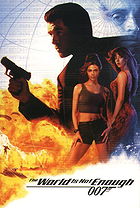
 0 comments,
0 comments, 